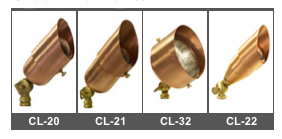Upward Lighting in Charleston SC
Have you ever really stopped to think about how light affects our personalities, moods, and sense of well-being? Have you ever noticed how light color and brightness “set the mood” of a particular setting?
As Charleston, SC upward lighting designers, we have the ability to actually influence and control the moods of our customers. Achieving this is actually quite simple if you keep one basic rule in mind: natural light always comes from above.
In our everyday environment, all of our light is derived from above. Whether it is the sun, the moon, or track and recessed lighting in your home, all of the light in our lives is generated from above. This creates a natural feeling of comfort and calmness. In upward lighting, we have the ability to “create drama” by placing light sources in the ground projecting light up. Subconsciously, this creates an unnatural feeling in humans, forcing us into focusing on the “up lit” subject. By understanding this simple concept, we can design more dramatic and effective landscape scenes.
Types of Upward Lights
Brass Up Lights
Aluminum Up Lights
Copper Up Lights
There are, however, many different techniques in upward lights. The most common is simply to place fixtures at the base of a subject and project light up. Although effective, this only creates a one-dimensional scene. A more dramatic scene can be achieved by using multiple fixtures and “cross lighting” the subject you are trying to showcase. Whether a tree or a statue, cross-lighting will create a broader and deeper scene.
If you have a solid surface such as a wall or fence near your subject, you should experiment with shadowing and silhouetting techniques. Shadowing can be achieved by placing fixtures slightly in front of your subject and directing the light through the subject creating shadows on the wall. Shadowing creates depth and movement to the landscape creating a multi-dimensional scene.
Silhouetting can be achieved by placing the light source behind the subject and grazing the background wall. This also creates movement in the landscape, but the effect is always limiting to the size of the subject you wish to highlight.



